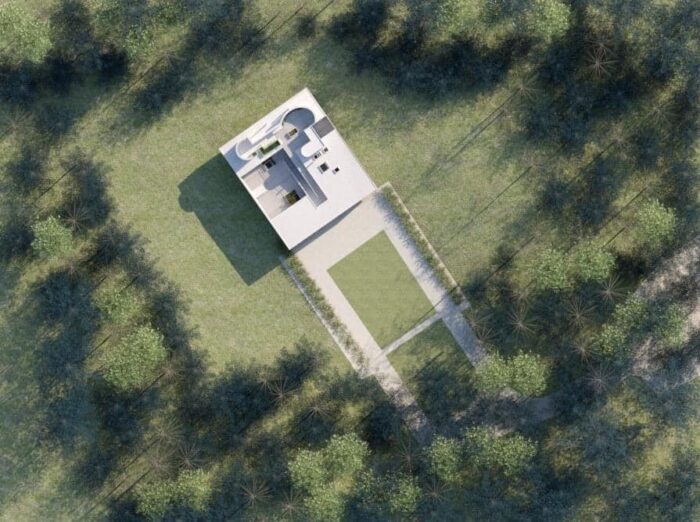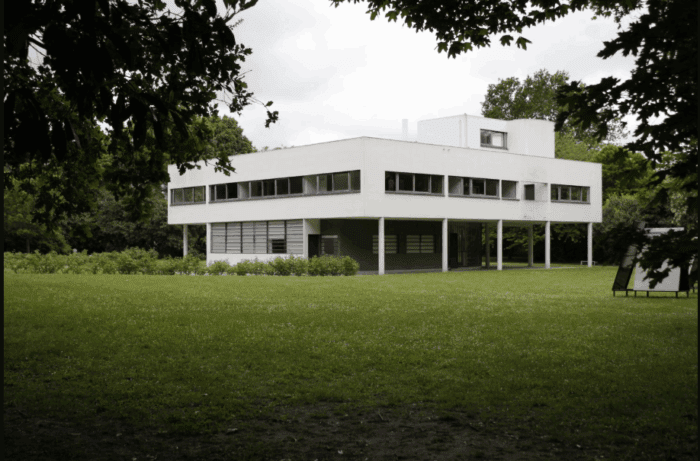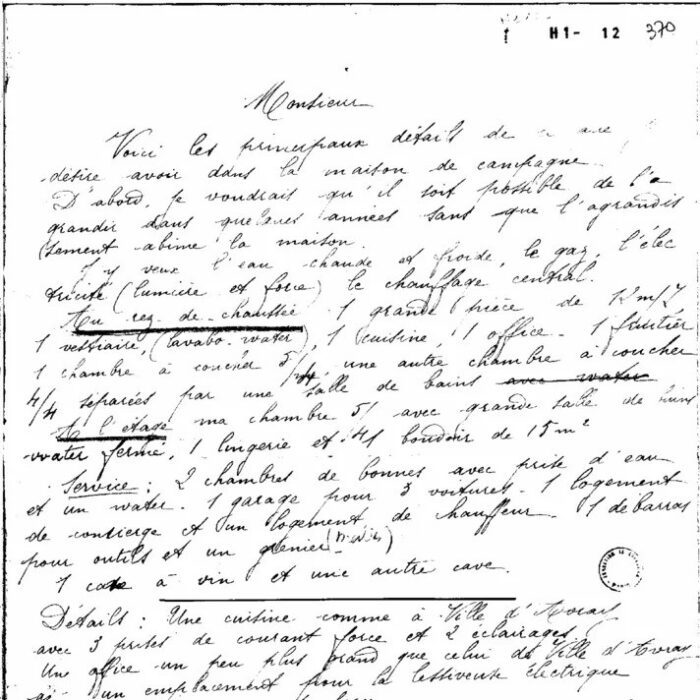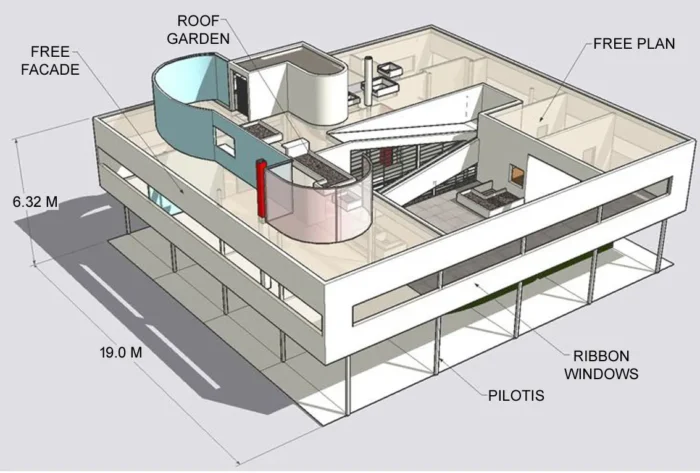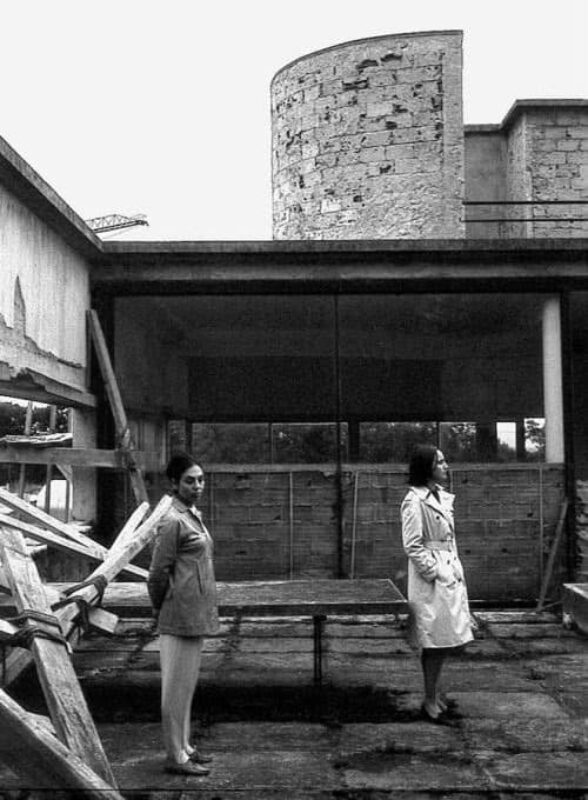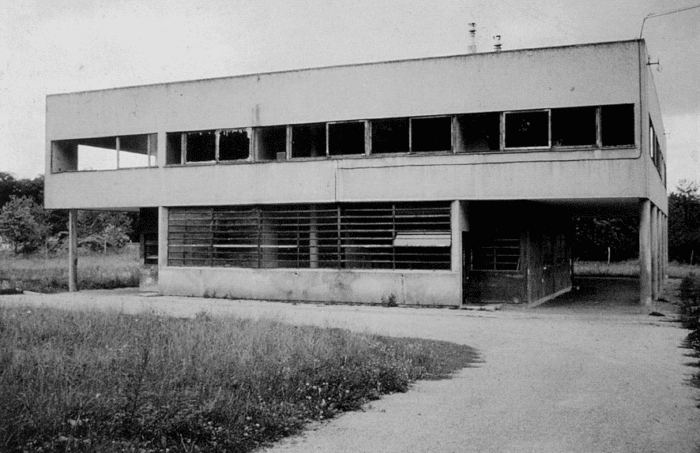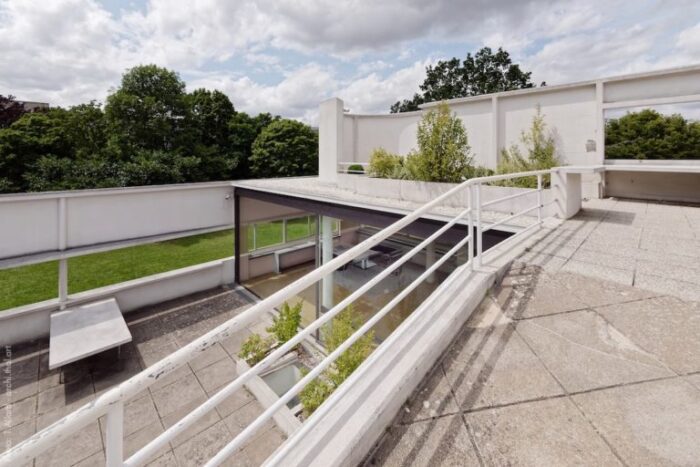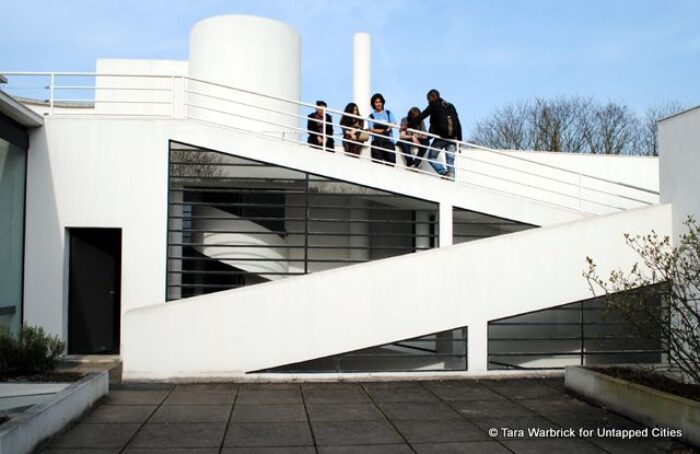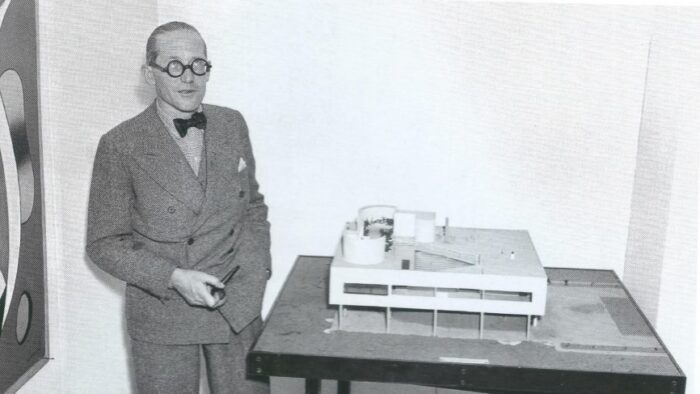Villa Savoye: Le Corbusier’s Revolutionary Masterpiece That Changed Architecture Forever
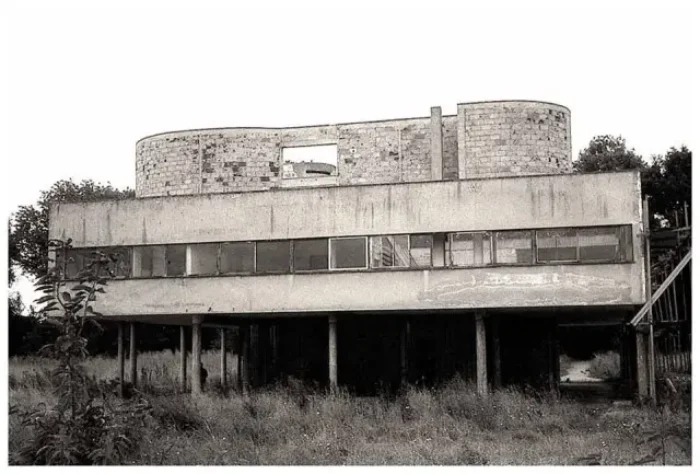
You’re standing in front of a white, geometric box floating above the ground, supported by slender concrete columns. It’s 1931, and you’re looking at something that shouldn’t exist yet – a house that looks like it was beamed down from the future. That’s Villa Savoye, and it’s about to change everything you think you know about what a home can be.
When Modern Architecture Found Its Voice
You know how some buildings just get their moment? Villa Savoye had its moment before most people even realized what they were looking at. Built between 1928 and 1931 in Poissy, just outside Paris, this wasn’t just another rich family’s weekend retreat. It was Le Corbusier’s manifesto made concrete – literally.
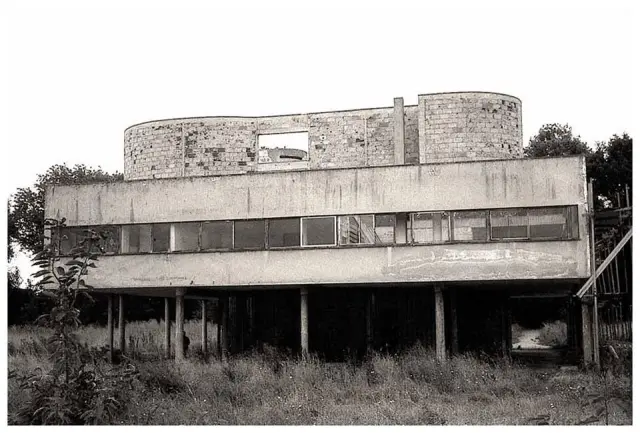
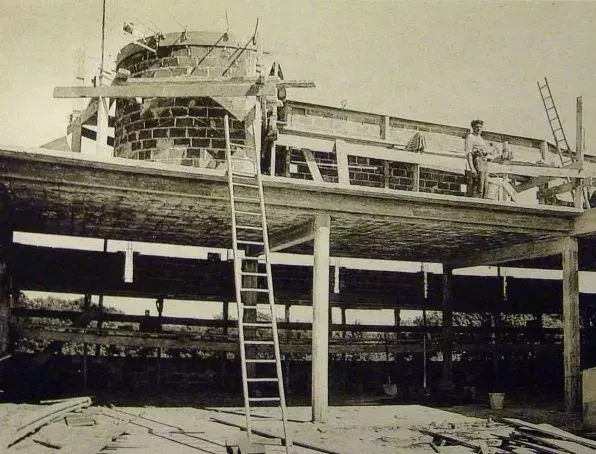
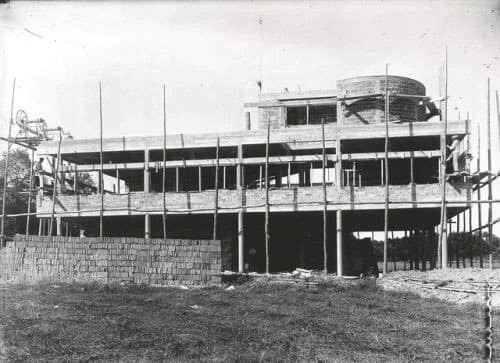
Think about it: while most architects were still trying to figure out what to do with this new material called reinforced concrete, Le Corbusier was already three steps ahead. He wasn’t just building a house; he was writing the rules for how we’d live in the 20th century. The fact that Villa Savoye became a UNESCO World Heritage Site in 2016 tells you everything about its lasting impact.
The Five Points That Broke All the Rules
Here’s where it gets really interesting. Le Corbusier didn’t just wake up one day and decide to build a floating box. He had a system – five points that would revolutionize architecture. And Villa Savoye? It was his proof of concept.
Pilotis: The House That Learned to Fly
Those slender concrete columns – pilotis – weren’t just showing off. They were making a statement: “Why should a house hug the ground when it can dance above it?” By lifting the main living spaces up, Le Corbusier gave the landscape back to nature while creating this incredible sense of lightness. Walk underneath Villa Savoye today, and you’ll feel like you’re in a modern forest where the trees happen to be made of concrete.
The Free Floor Plan: Walls That Don’t Boss You Around
This might sound obvious now, but in 1930, it was radical. When you don’t need walls to hold up your building, suddenly every room can be exactly where it needs to be. Le Corbusier turned the interior into a flowing sequence of spaces that seemed to breathe. The famous ramp that curves through the house? That’s not just circulation – it’s architecture as choreography.
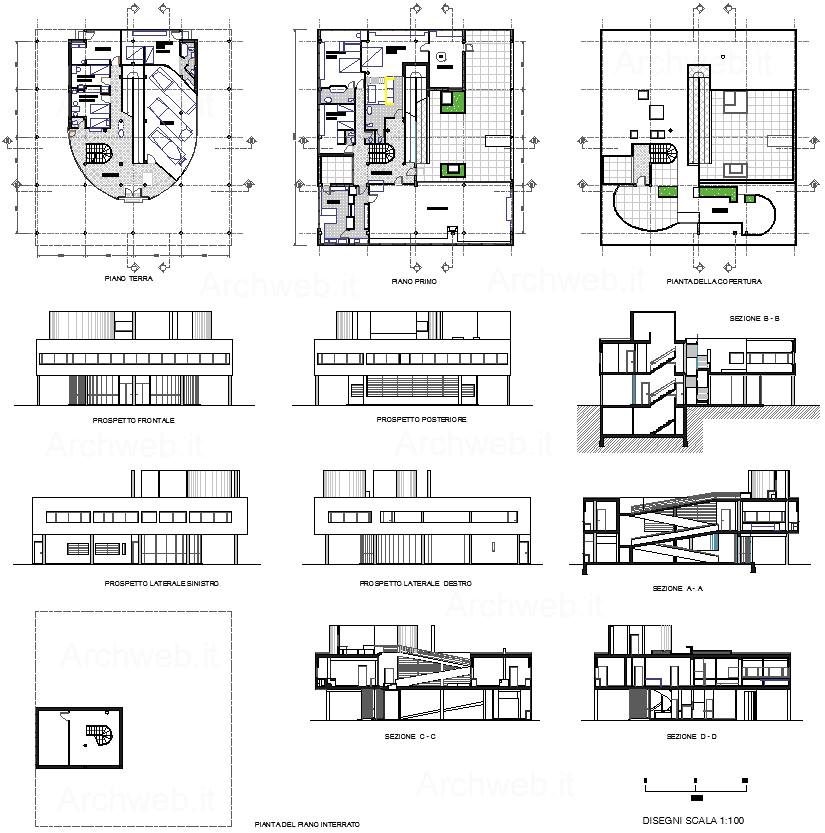
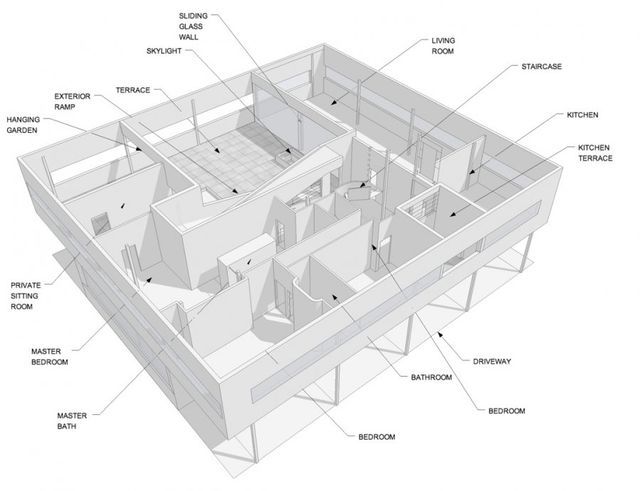
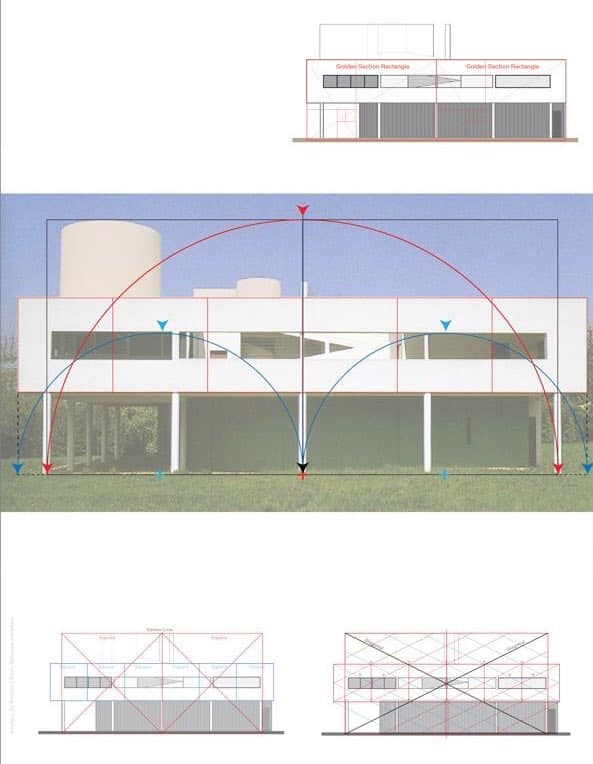
Horizontal Windows: Framing the World
Forget those chunky, vertical windows your grandmother had. Villa Savoye’s ribbon windows wrap around the building like a film strip, turning the landscape into a panoramic movie. These windows don’t just let light in; they redefine how you see the world outside.
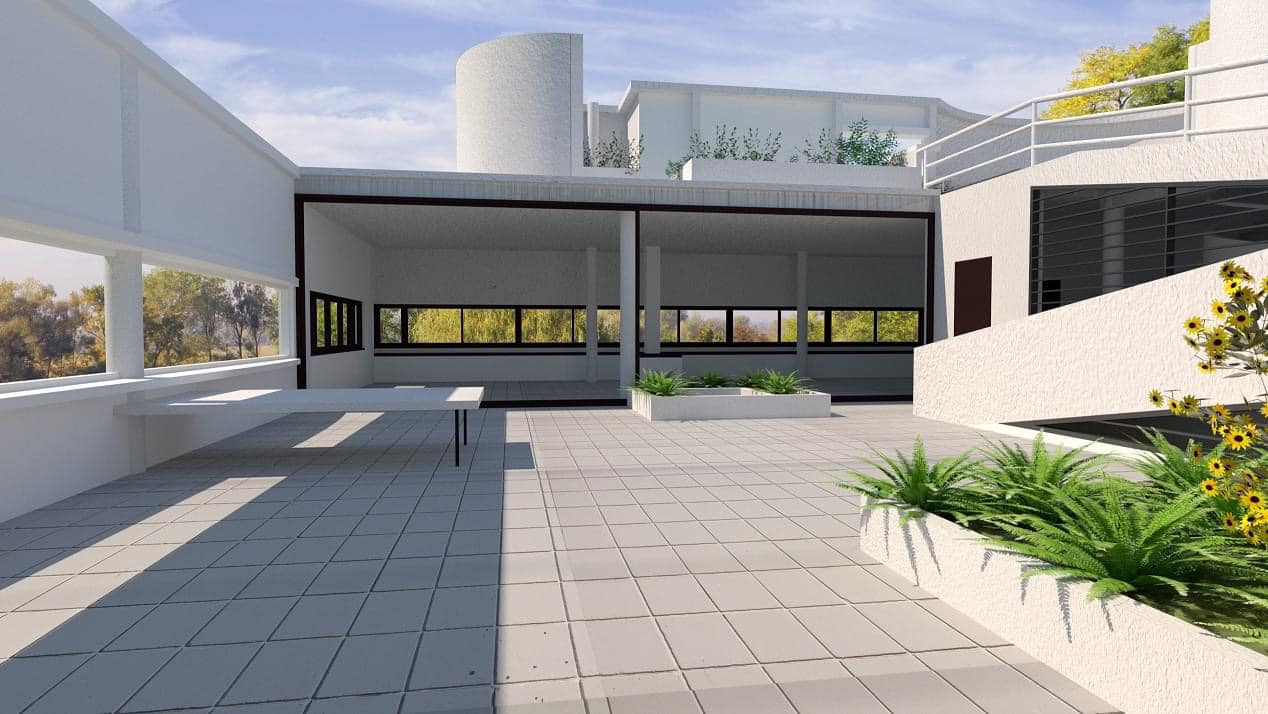
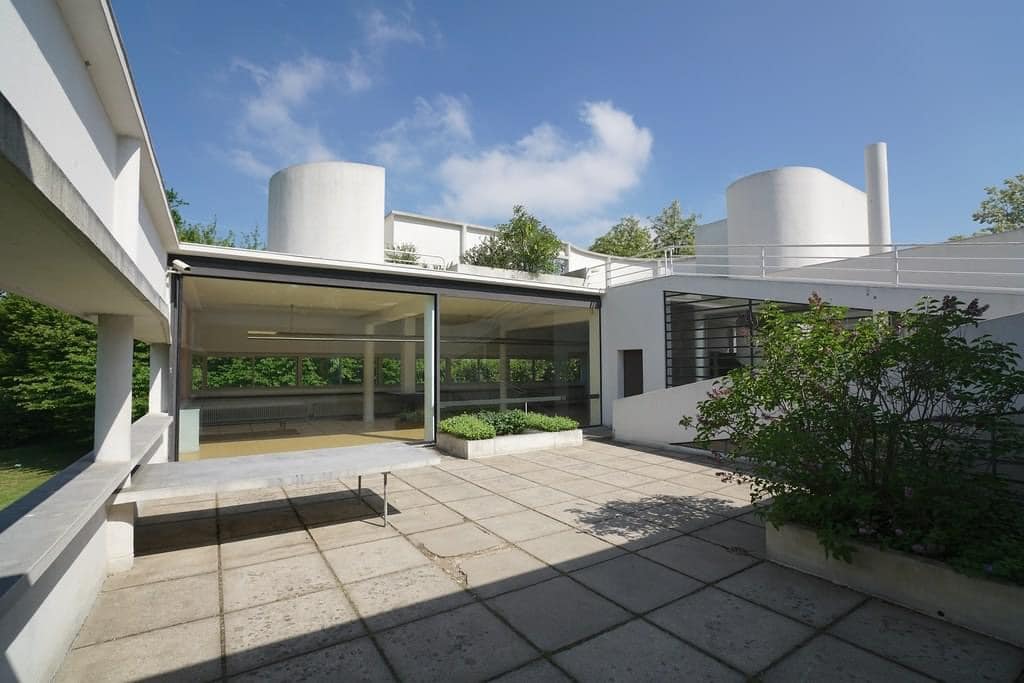
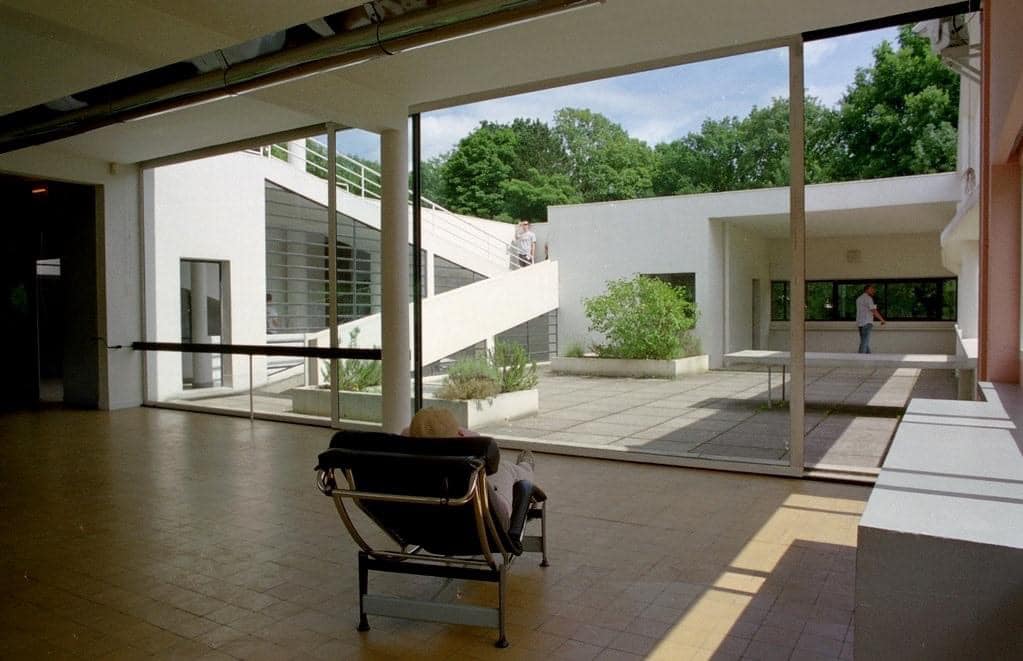
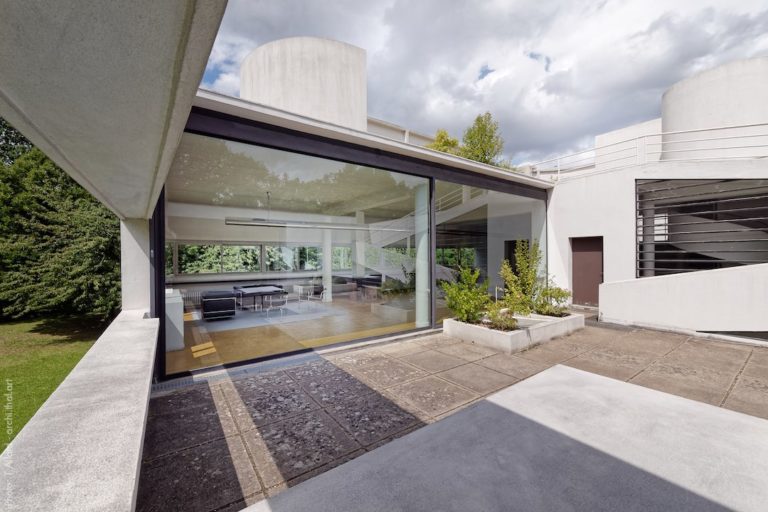
The Cultural Earthquake Nobody Saw Coming
When Villa Savoye was completed, the architectural establishment didn’t know what hit them. Here was a building that looked like nothing they’d ever seen, yet somehow made perfect sense. The influence? Massive. Every glass box office building, every open-plan apartment, every house that treats indoor and outdoor space as one – they all owe something to what Le Corbusier figured out in Poissy.
But here’s the thing that really gets me: the Savoye family initially hated their new house. They complained about everything – the flat roof leaked, the heating didn’t work properly, the white walls showed every mark. It’s like commissioning a Picasso and complaining it doesn’t look like a photograph. Sometimes genius takes a while to be appreciated.
From Ruin to Resurrection: The Preservation Story
Here’s where the story gets really dramatic. After World War II, Villa Savoye was abandoned and left to decay. Can you imagine? One of the most important buildings of the 20th century, slowly crumbling away, covered in graffiti, used as a barn. By the 1960s, it was in such terrible condition that demolition seemed inevitable.
But architecture has its heroes, and Le Corbusier himself led the charge to save his masterpiece. The campaign to preserve Villa Savoye became a rallying cry for the emerging historic preservation movement. In 1965, it became the first modernist building to be listed as a French historical monument – a huge victory that set the precedent for protecting 20th-century architecture.
The restoration work has been ongoing ever since. The Center des Monuments Nationaux reopened Villa Savoye in December 2022 after four months of conservation work, showing just how seriously France takes the preservation of this architectural treasure. These aren’t just repairs – they’re acts of cultural preservation, ensuring that future generations can experience Le Corbusier’s vision firsthand.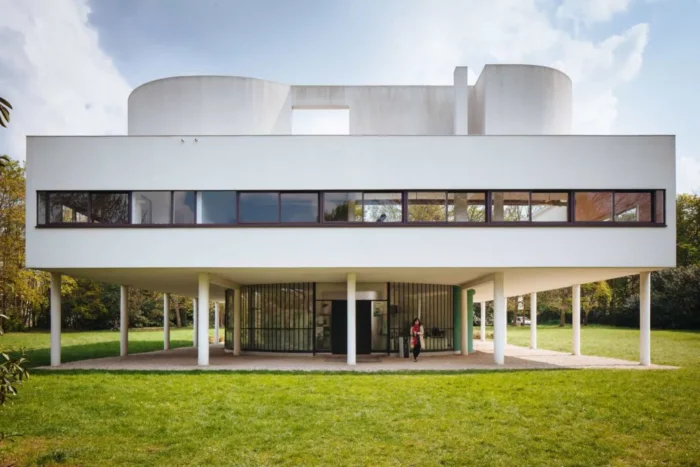
Personal Encounters: When Architecture Becomes Memory
I’ve talked to dozens of architects who describe their first visit to Villa Savoye as a religious experience. There’s something about walking that ramp, about the way the light changes as you move through the spaces, that stays with you. One architect told me, “I thought I understood Le Corbusier from books and photographs. Then I spent an afternoon at Villa Savoye, and I realized I’d been looking at shadows of the real thing.”
The building has this incredible ability to make you feel like you’re part of something larger. Maybe it’s the way the horizontal windows frame the landscape, or how the ramp creates this sense of architectural promenade. Whatever it is, Villa Savoye doesn’t just house people – it transforms them.
Contemporary Relevance: Why Villa Savoye Still Matters
Fast-forward to 2025, and Villa Savoye’s ideas are everywhere. Open-plan living? That’s Le Corbusier. Floor-to-ceiling windows? Le Corbusier. The idea that a house should be a “machine for living”? You guessed it.
But it’s more than just aesthetic influence. The villa’s emphasis on functionality, open plan living, and the innovative use of natural light has influenced residential design globally. In our age of climate change and sustainable design, Villa Savoye’s principles – the integration with landscape, the emphasis on natural light, the efficient use of space – feel remarkably contemporary.
Contemporary architects are still learning from Villa Savoye’s approach to sustainability. Those pilotis that seemed so radical in 1930? They’re now recognized as an early example of minimizing a building’s environmental footprint. The roof garden that gave back to nature what the building took? Pure sustainability genius, decades before anyone was talking about green roofs.
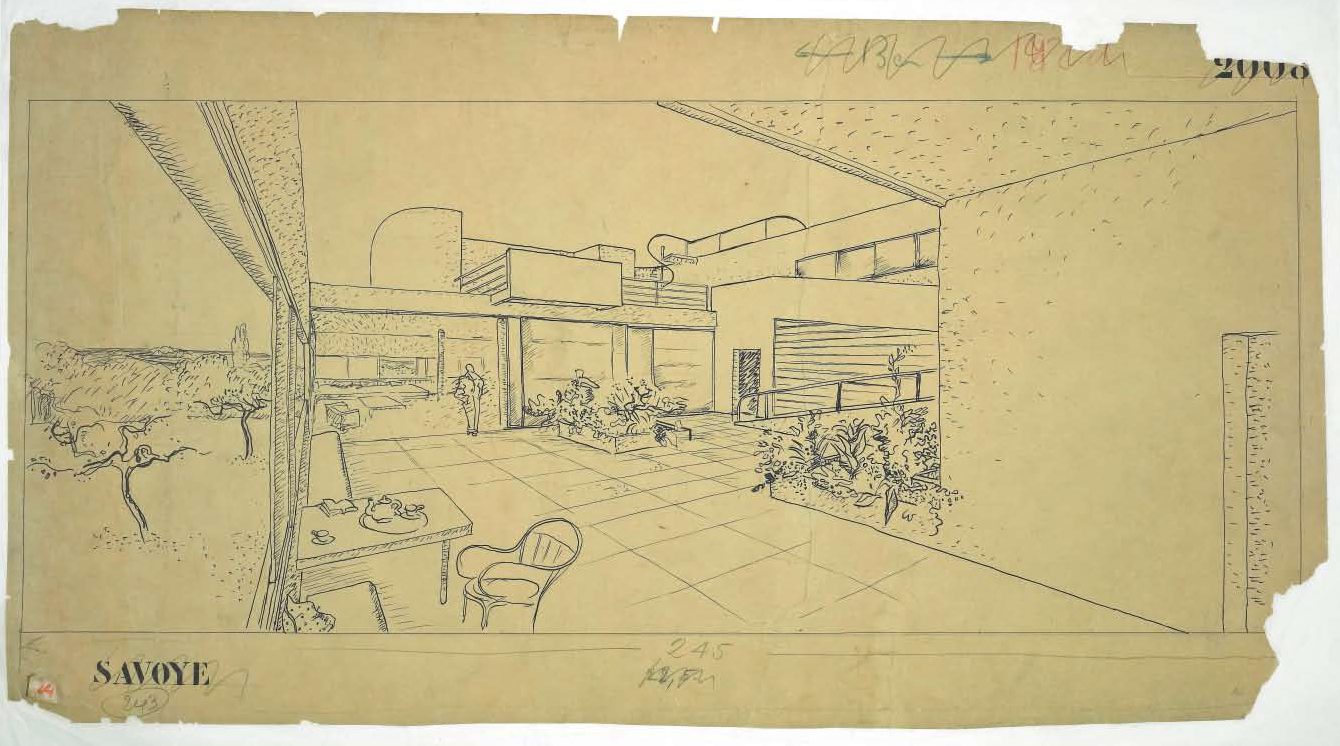
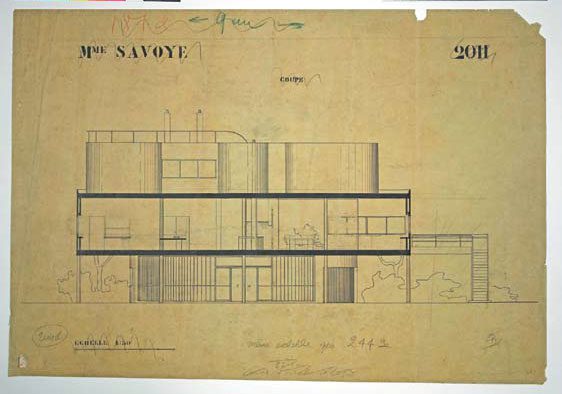
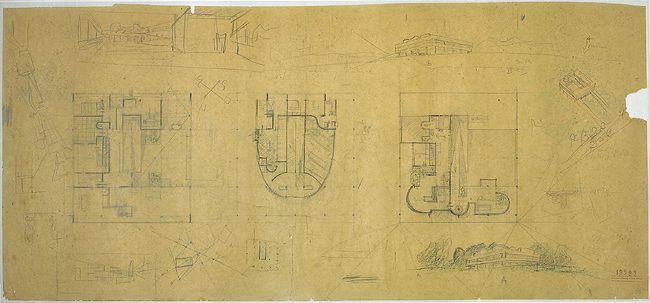
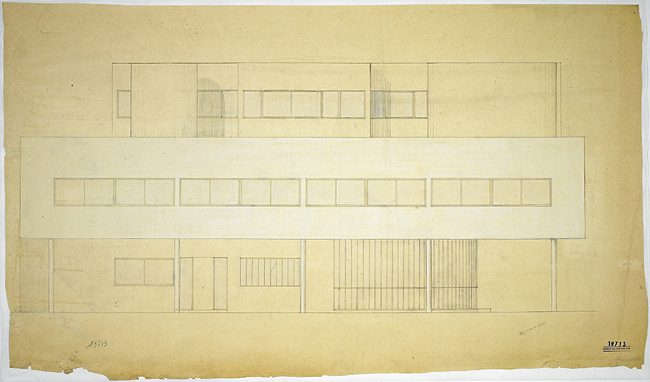
The Digital Age Meets Modernist Genius
Here’s something Le Corbusier couldn’t have imagined: Villa Savoye has become one of the most photographed buildings in the world. Instagram has given it a whole new life, with thousands of visitors sharing their own interpretations of this modernist masterpiece. The building’s clean lines and dramatic spaces are perfect for our image-obsessed culture.
But beyond social media, Villa Savoye continues to influence digital architecture. Virtual reality experiences of the building are helping architecture students worldwide understand Le Corbusier’s spatial concepts. The building’s geometric purity makes it perfect for 3D modeling and digital reconstruction, ensuring that its lessons can be shared with future generations of architects.
Visual Legacy: The Building as Icon
When you think about it, Villa Savoye might be the most recognizable modernist building in the world. Those clean white walls, the ribbon windows, the pilotis – they’ve become visual shorthand for “modern architecture.” The building appears in countless architectural textbooks, documentaries, and design blogs. It’s the modernist house that everyone recognizes, even if they don’t know its name.
The visual impact goes beyond architecture. Fashion designers have drawn inspiration from Villa Savoye’s clean lines. Product designers have borrowed its geometric purity. Even filmmakers have used it as a symbol of modernist utopia – or sometimes, modernist dystopia, depending on the story they’re telling.
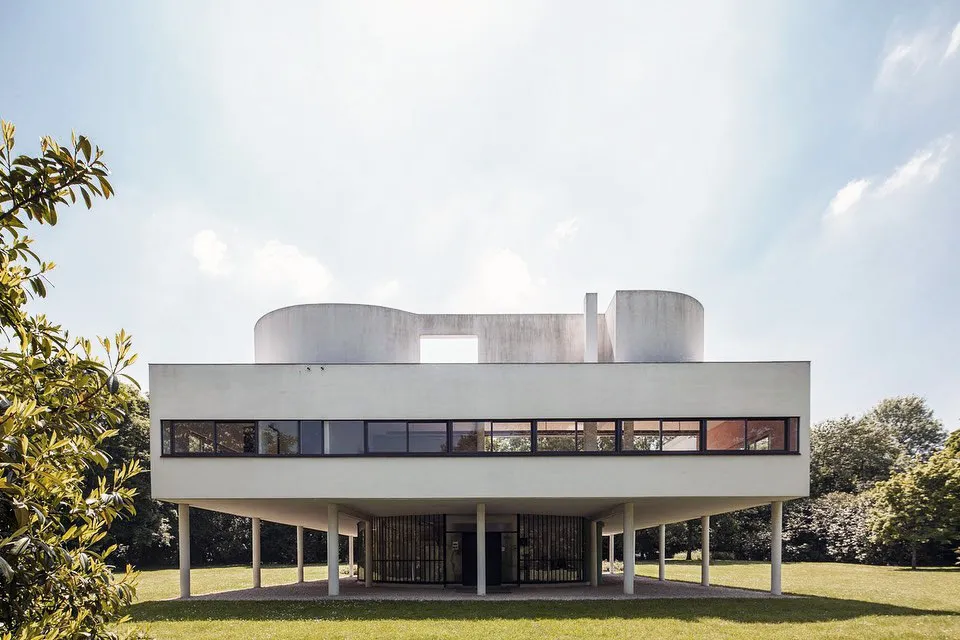
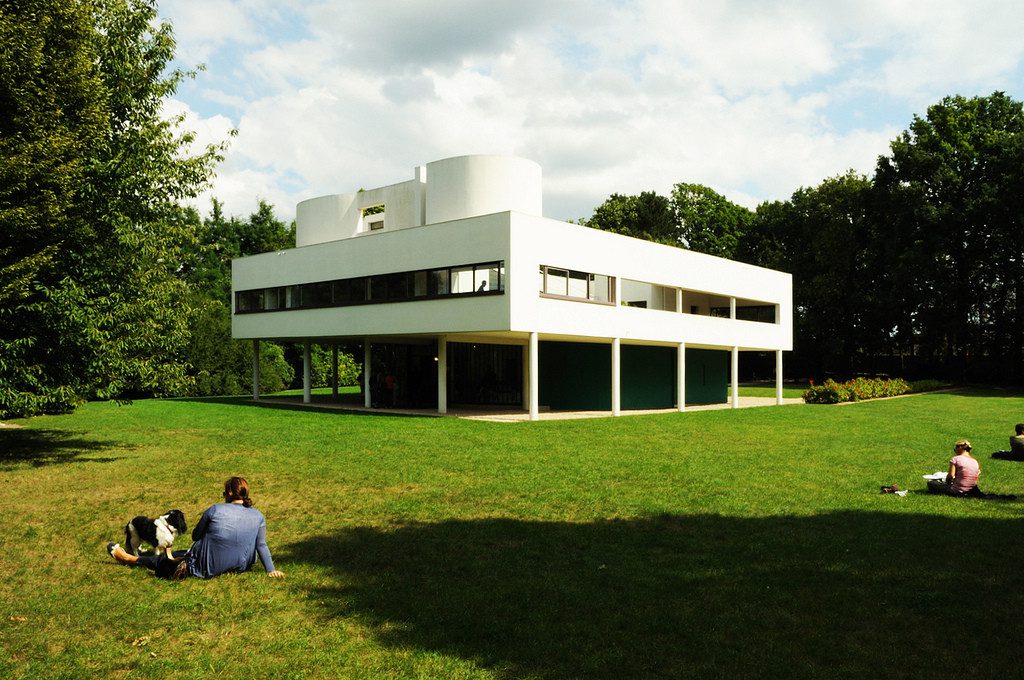
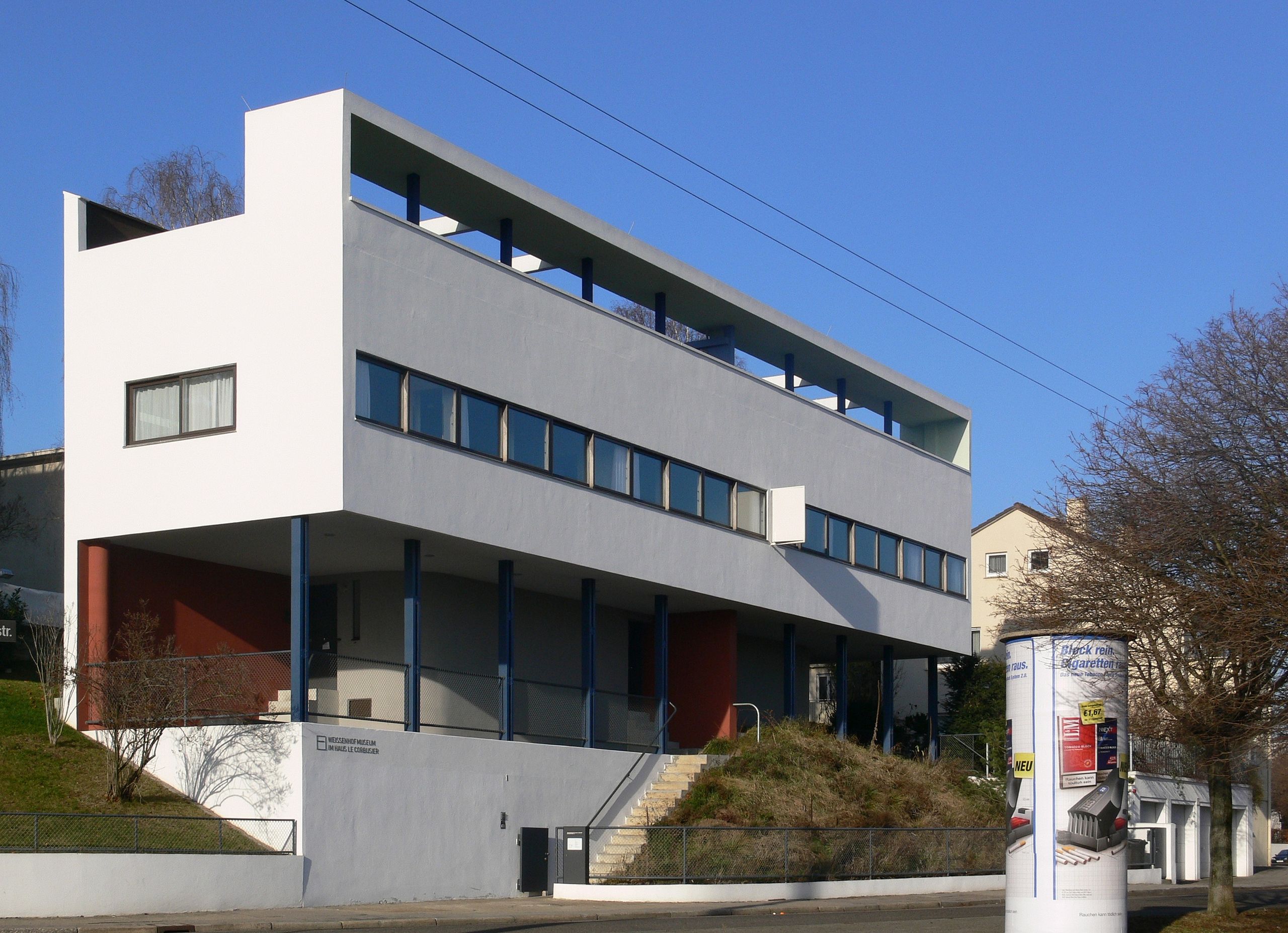
The Ongoing Conversation
What makes Villa Savoye truly special isn’t just what it achieved in 1931, but how it continues to provoke discussion today. Architecture critics still debate whether it’s a masterpiece of functional design or a beautiful but impractical manifesto. Sustainability experts argue about whether its modernist principles are compatible with contemporary environmental concerns. Historians examine its role in the broader context of 20th-century social and political change.
But maybe that’s the point. Great architecture isn’t supposed to provide easy answers – it’s supposed to ask important questions. Villa Savoye asks: How should we live? What is the relationship between architecture and nature? Can a building change the way we see the world?
Nearly a century after its completion, Villa Savoye continues to provide answers to these questions while raising new ones. It remains a touchstone for architects, a pilgrimage site for design enthusiasts, and a testament to the power of radical thinking. In a world of increasing complexity, there’s something deeply satisfying about a building that distills the essence of modern living into such pure, elegant forms.
Le Corbusier once said that a house should be “a machine for living in.” Villa Savoye proved that this machine could also be a work of art, a piece of philosophy, and a glimpse into the future. Not bad for a weekend house that nobody wanted to live in.
For more insights into Le Corbusier’s revolutionary approach to architecture, explore the complete collection of his works and discover how his ideas continue to shape contemporary design.
The post Villa Savoye: Le Corbusier’s Revolutionary Masterpiece That Changed Architecture Forever appeared first on Arch2O.com.

